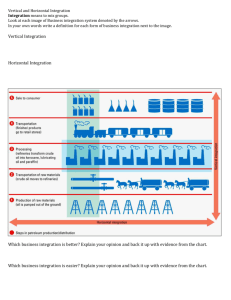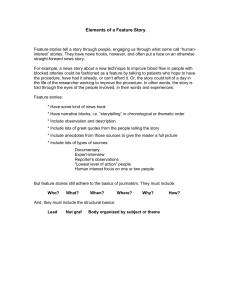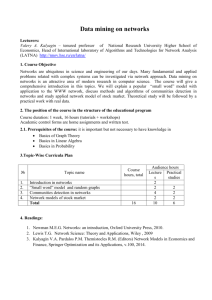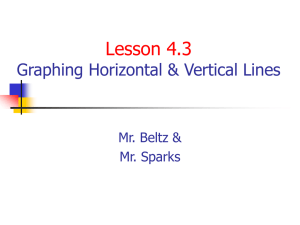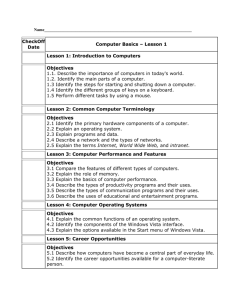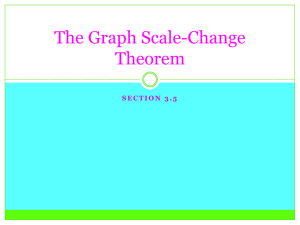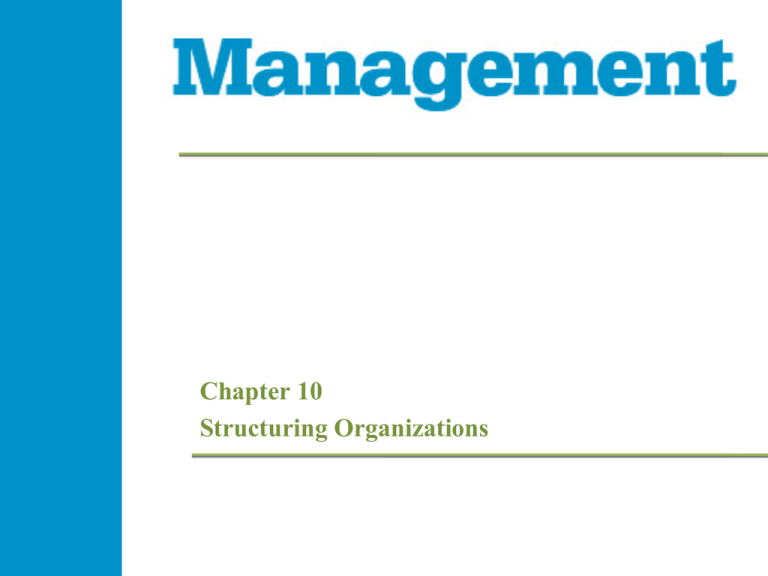
Chapter 10
Structuring Organizations
Learning Objectives
Explain how differentiation and integration define
performance cultures
Describe how managers vertically organize processes
and teams to centralize decision making
Describe how mangers horizontally organize processes
and teams to distribute decision making throughout the
organization
Show how managers combine vertical and horizontal
approaches to organizational design in order to be more
adaptive
Identify additional resources that contemporary
managers use to increase organizational adaptability
Management 1e
10-- 2
The Basics (p. 256)
Hierarchy
• Vertically organized structure of power
relationships, where the top level holds the most
power and resources
• Every organization needs some type of structure in
place to be successful
• Unites the different units of a company
• Brings units in tune with the company’s
underlying principles, core purposes, goals, and
objectives
Management 1e
10- 3
The Basics (cont.)
Hierarchy comes in many states
Figure 10.1
Management 1e
10- 4
The Basics (cont.)
Designing performance cultures (p. 256)
• Through the creation of an organizational culture,
managers can, consciously or unconsciously, design
a performance culture
• Differentiation – process through which managers
divide labor based on tasks and functions (p. 257)
• Integration – horizontal coordination between
functions, departments, and organizational activities
Organizations must strike a balance between
differentiation and integration
Management 1e
10- 5
The Basics (cont.)
Structure must be modified to adapt to changes
in the internal and external environments
• Organic organization – highly adaptive structure
defined by horizontal integration, distributed
decision making, and employees with a high
degree of generalization (p. 257)
• Span of control – the optimum number of direct
reports that a person can manage effectively
Management 1e
10- 6
The Basics (cont.)
Specialization (p. 258)
• Form of differentiation
• Focusing a group or individual’s activities based
on strengths, aptitudes, or skills
Coordination
• Synchronization of an organization’s functions to
ensure efficient use of resources in pursuit of goals
and objectives
Management 1e
10- 7
The Basics (cont.)
To give clarity to the integration process,
managers should rely on:
• Standardization – performance context where
policies and procedures seek to create uniform
results (p. 258)
• Formalization – degree to which policies and
procedures determine specific jobs and functions
• Delegation – when a manager grants power and
authority
Management 1e
10- 8
Vertical Approach (p. 259)
Vertical organization structure
• Characterized by hierarchical authority and
communication channels
• Authority – implicit and explicit power that a
manager or employee has to fulfill an organizational
function or role
• Chain of command – predefined structural order of
authority that determines how decisions are made
and communicated
Management 1e
10- 9
Vertical Approach (cont.)
Figure 10.2
Management 1e
10- 10
Vertical Approach (cont.)
Corporate governance (p. 261)
•Compendium of polices intended to ensure
transparency and fulfillment of duties to stakeholders
Broker
•Trusted intermediary that facilitates mutually-agreed
upon outcomes for two or more parties
Organization chart
•Visual document that communicates how a company
is organized
Management 1e
10- 11
Vertical Approach (cont.)
Vertical model at work (p. 261)
• Network organization – a group of independent
companies that organize themselves to appear as a
larger entity (p. 262)
Changing organizational structure
• Unity-of-command principle – each employee
reports to and is accountable to only one manager
(p. 263)
Management 1e
10- 12
Horizontal Approach (p. 264)
Decentralized structure
• Relies on all employees to collect and
communicate information in order to make
decisions and recommend changes
Researching organizational structures
• Departmentalization – groups together processes
and jobs based on functions, products or customers
Management 1e
10- 13
Horizontal Approach (cont.)
Functional organization (p. 265)
• Hierarchical structure where employees are
managed through clear levels of authority
• Autonomy – level of individual discretion that an
employee has to make decisions
Divisional organization
• Processes and jobs are grouped based on clearly
defined market segments or geography
Matrix organization
• Facilitates horizontal integration and collaboration
Management 1e
10- 14
Beyond the Organization: Free Agents
and Virtual Teams (p. 268)
Flexible work arrangements
•Free agents - independent workers that supply
organizations with talent for projects or time-bound
objectives
•Telecommuting - employee given flexibility in
terms of work location and, often, work hours too
•Virtual team – group of employees who work
across barriers consisting of time, distance, and
organizational boundaries (p. 269)
Linked together by information and communication
technologies
Management 1e
10- 15
Copyright
Copyright © 2014 John Wiley & Sons, Inc.
All rights reserved. Reproduction or translation of this work
beyond that permitted in Section 117 of the 1976 United States
Copyright Act without express permission of the copyright owner
is unlawful. Request for further information should be addressed
to the Permissions Department, John Wiley & Sons, Inc. The
purchaser may make back-up copies for his/her own use only and
not for distribution or resale. The Publisher assumes no
responsibility for errors, omissions, or damages, caused by the
use of these programs or from the use of the information herein.
Management 1e
10-- 16

